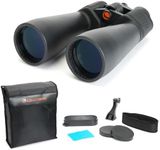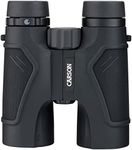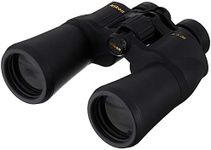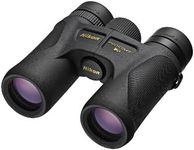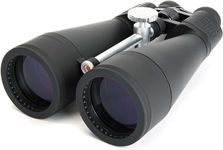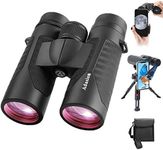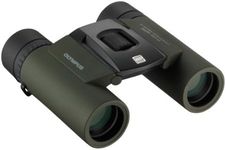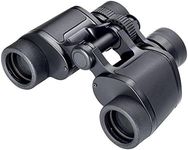Buying Guide for the Best Long-Range Binoculars
When choosing long-range binoculars, it's important to consider how and where you plan to use them. Whether you're bird watching, stargazing, or attending a sports event, the right pair of binoculars can greatly enhance your experience. Understanding the key specifications will help you make an informed decision that aligns with your needs and preferences.MagnificationMagnification indicates how much closer an object will appear through the binoculars compared to the naked eye. It's usually represented as a number followed by 'x', such as 10x. Higher magnification means you can see further, but it can also make the image shakier and reduce the field of view. For long-range viewing, a magnification of 10x to 20x is often ideal, but consider your ability to hold the binoculars steady or if you'll need a tripod.
Objective Lens DiameterThe objective lens diameter, measured in millimeters, determines how much light the binoculars can gather. Larger diameters allow more light, resulting in brighter images, especially in low-light conditions. For long-range binoculars, an objective lens diameter of 42mm to 50mm is common. Choose a larger diameter if you plan to use the binoculars in dim lighting or for stargazing.
Field of ViewField of view refers to the width of the area visible through the binoculars at a specific distance, usually measured in feet at 1,000 yards. A wider field of view makes it easier to locate and track moving objects. For long-range binoculars, a field of view of 300 to 400 feet at 1,000 yards is typical. If you're observing fast-moving subjects, prioritize a wider field of view.
Lens CoatingLens coating enhances light transmission and reduces glare, improving image clarity and contrast. Coatings can be single-layer or multi-layer, with multi-coated lenses offering better performance. For long-range binoculars, look for fully multi-coated lenses to ensure the best possible image quality, especially in challenging lighting conditions.
Weight and SizeThe weight and size of binoculars affect portability and ease of use. Larger binoculars with bigger lenses tend to be heavier, which can be tiring to hold for extended periods. Consider how you'll be using the binoculars; if you'll be carrying them for long distances or holding them for a long time, opt for a lighter, more compact model.
Eye ReliefEye relief is the distance from the eyepiece to your eye while still seeing the full field of view. It's crucial for eyeglass wearers, as insufficient eye relief can make it difficult to see the entire image. For long-range binoculars, look for an eye relief of at least 15mm if you wear glasses. If you don't wear glasses, shorter eye relief may be acceptable.
Waterproof and FogproofWaterproof and fogproof features protect binoculars from moisture and internal fogging, which is important for outdoor use in various weather conditions. These features are achieved through sealed O-rings and nitrogen or argon purging. If you plan to use your binoculars in wet or humid environments, ensure they are both waterproof and fogproof to maintain performance and durability.

